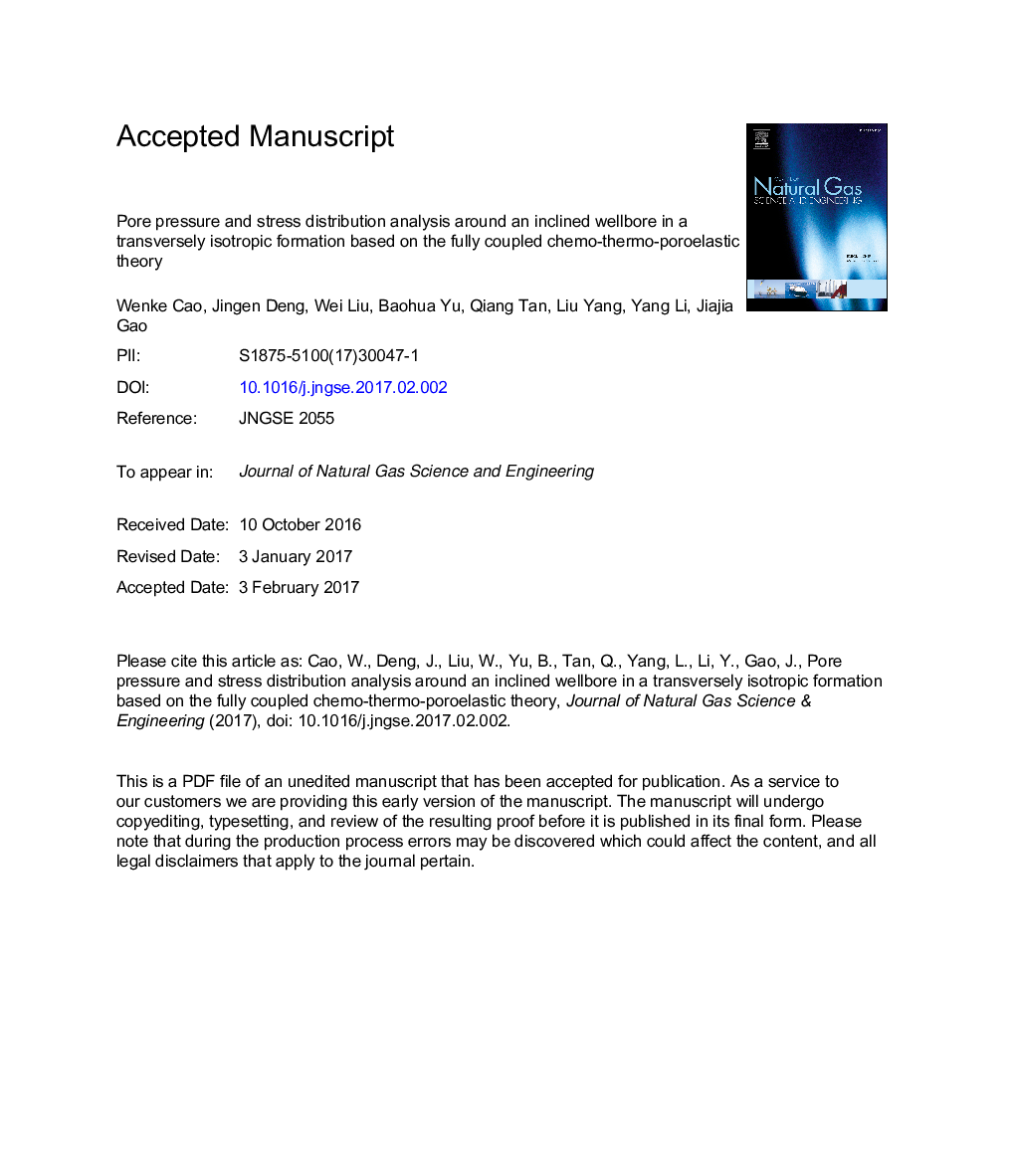| Article ID | Journal | Published Year | Pages | File Type |
|---|---|---|---|---|
| 5485067 | Journal of Natural Gas Science and Engineering | 2017 | 49 Pages |
Abstract
Wellbore instability is a widespread problem when drilling in shale formations, particularly with water-based drilling fluid. The main reason for the occurrence of wellbore instability is that stress concentration and pore pressure redistribution occur around the wellbore once a hole is drilled; current studies show that the drilling fluid temperature and solute mass fraction play important roles during the process. In this work, a non-linear fully coupled chemo-thermo-poroelastic finite element model is developed to quantitatively access thermal and chemical effects on time-dependent pore pressure and effective stresses; in addition, material constant sensitivity analysis of an inclined well drilled in a transversely isotropic formation is presented. The results reveal the following: fluid transfer is greatly affected by thermal and chemical osmosis, the lower temperature and higher solute mass fraction of the drilling fluid contribute to decreasing the pore pressure and are beneficial for wellbore stability, and thermal parameters (such as thermal osmosis coefficient and thermal diffusivity) and chemical parameters (such as reflection coefficient and solute diffusion coefficient) have high effects on the pore pressure and effective stresses. Anisotropy ratio analysis of the material constants indicates that the pore pressure and effective stresses are very sensitive to Young's modulus and the permeability ratio, but are not sensitive to Poisson's ratio. Therefore, the developed coupled chemo-thermo-poroelastic theory illustrates that optimization of the reduction of the drilling fluid temperature while maintaining a high solute mass fraction could enhance wellbore stability.
Related Topics
Physical Sciences and Engineering
Earth and Planetary Sciences
Earth and Planetary Sciences (General)
Authors
Wenke Cao, Jingen Deng, Wei Liu, Baohua Yu, Qiang Tan, Liu Yang, Yang Li, Jiajia Gao,
